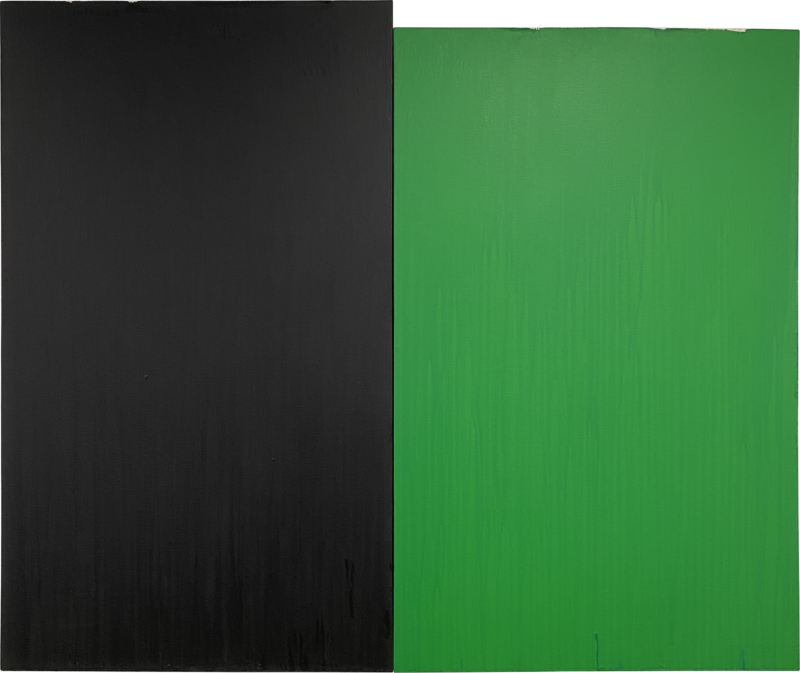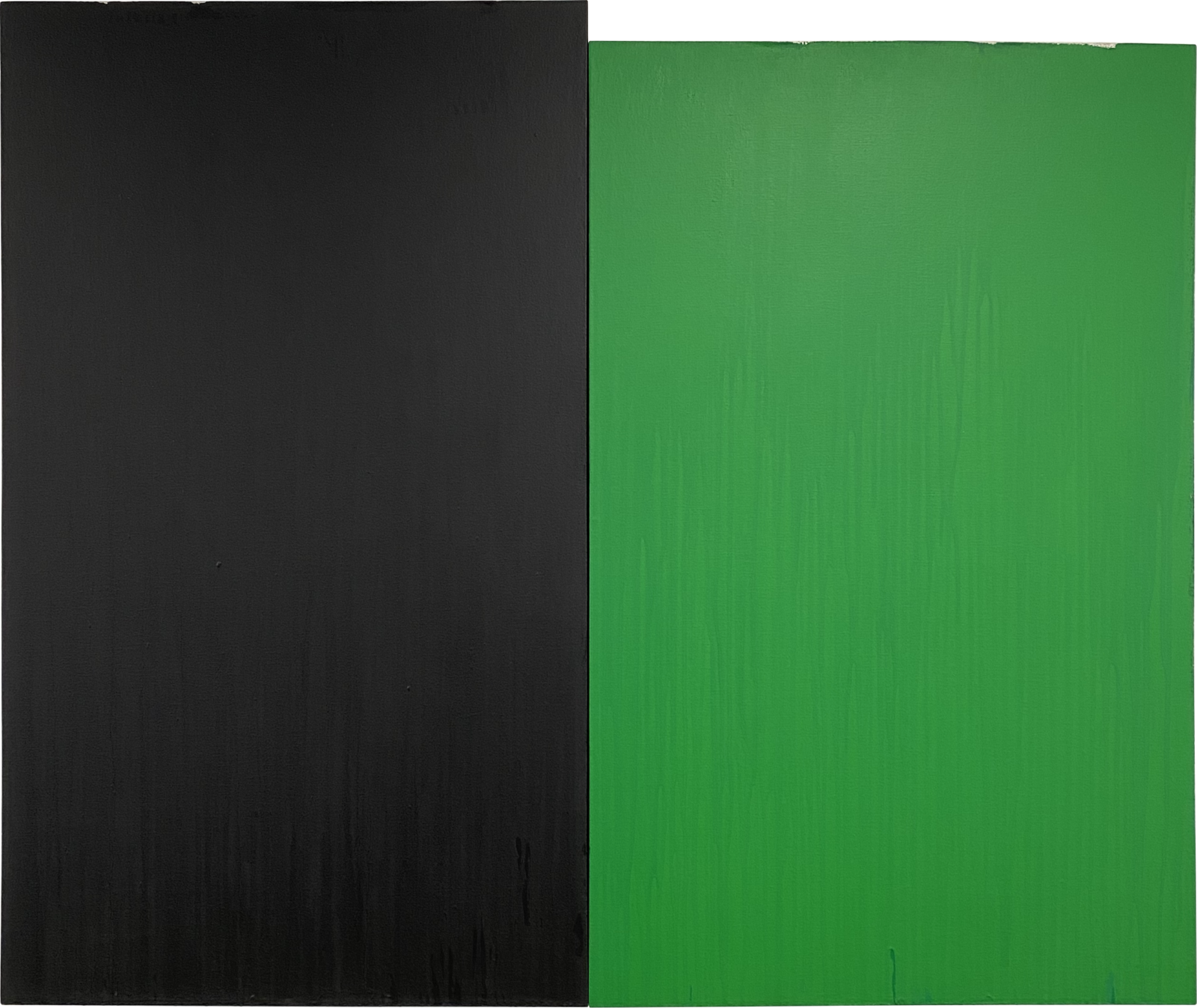BAMBURY, Stephen;
No. 44
1982
Acrylic on canvas
1500 x 1770mm

No. 44 forms part of Stephen Bambury’s Block series. In the catalogue for Seven Painters: The Eighties, the artist draws a connection between the series and Noam Chomsky’s theory of linguistics. Chomsky posited a distinction between a sentence’s ‘surface structure’ and its ‘deep structure’, the former concerning grammatical word order and the latter the underlying meaning or abstract concept. Deep structure is never spoken nor heard. Bambury says that ‘this unseen and unspoken component of language might come close to what I call non verbal thought in painting’.
Using another analogy, he took the terminology of Len Lye who distinguished between ‘old brain’ and ‘new brain’. The old brain was concerned with the mysterious and had the ability to discern unconscious genetic social evolutionary values of fine art myth—i.e. the workings of the creative imagination. For Bambury, Lye’s old brain is the same as his own idea of the contribution made by non-verbal thought in painting.
Bambury was interested, too, in the theories about brain orientation, specifically the notion that the left hemisphere contains the systems of language and analytical thought while the right can work out concepts without any kind of language. Lye’s old brain is the creative side, the right hemisphere, the non-verbal—or painting as ‘thinking without language’, as described by François Lhermitte in his book of the same title.
The surfaces of No. 44 are worked up layers of paint so that the signs of process are there but without any concern for expressive gesture. The two colours work on the contemplative viewer as an actualised object based on contrast. Note that this work, like others in the Block series, is identified by a number rather than an allusive title.
Inscriptions
STEPHEN BAMBURY – No 44 – 1982 [stretcher]References
Wystan Curnow and William McAloon, Stephen Bambury (Whakatū Nelson: Craig Potton Publishing, 2000), 64–65. (Here misidentified as No. 50, a work then in the Bank of New Zealand Art Collection.)
Provenance
?
Fletcher Trust Collection, purchased from Petar/James Gallery, Tāmaki Makaurau

